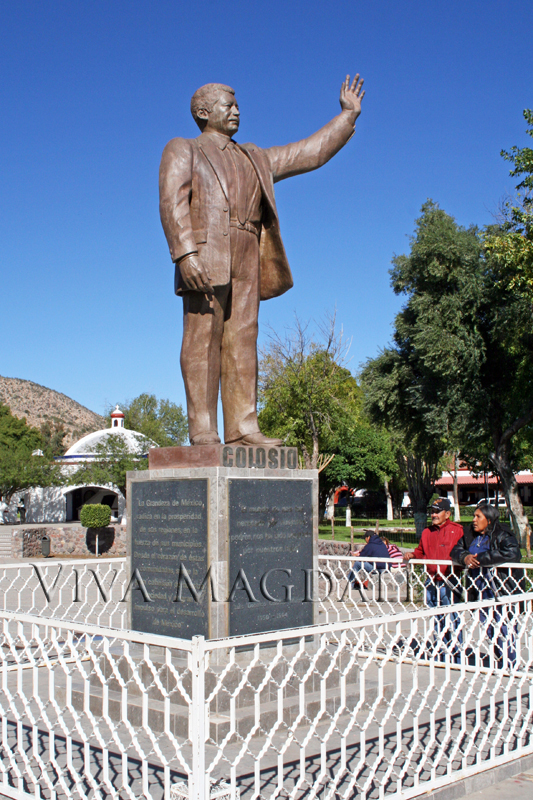History
The history of Magdalena de Kino, SonoraBrief History of Magdalena de Kino
One of the fascinating parts of Magdalena de Kino is its rich and varied history, with significant events occurring from hundreds of years ago to relatively recently.
Magdalena de Kino, originally named Buquivaba, was first visited by Europeans in 1540, when Spanish Explorer Francisco Vazquez de Coronado arrived in the area. Since then, much has changed here.
Buquivaba was established as a county seat by Juan Batista Escalante in the early 1600’s, and by mid-century Catholic missionaries began to appear, when Catholic priest Pedro Pantoja arrived.
Jesuit missionary Eusebio Francisco Kino arrived in the area in 1688 and founded the mission of Santa Maria de Magdalena de Buquivaba. The adobe mission was completed in 1691, but was subsequently destroyed during Indian rebellions and rebuilt several times.
As a side note, most of the ruins of original Jesuit adobe missions were destroyed when the current mission churches were built by the Franciscan missionaries. There is a site near Heroica Caborca, San Valentin del Bizani, where ruins of an original Kino mission still exist. To see photos of the ruins, click here.
The current church, now known as the Church of Santa Maria Magdalena, was constructed in 1950. It sits on the Plaza Monumental, which on adjoining sides has the tomb of Father Kino and a statue in honor of Magdalena’s native son Luis Donaldo Colosio Murrieta, a national presidential candidate who was killed in 1994 while campaigning in Tijuana.
Colosio and his wife Diana Laura are entombed in the Colosio Mausoleum, in the Magdalena city cemetary. The mausoleum is an impressive architectural sight that has on display a bronze statue of Luis Donaldo and Diana Laura, with some of his more famous quotes displayed. Downstairs, where the bodies are entombed, is a sitting room with a collection of photos, paintings, documents and other remembrances.

